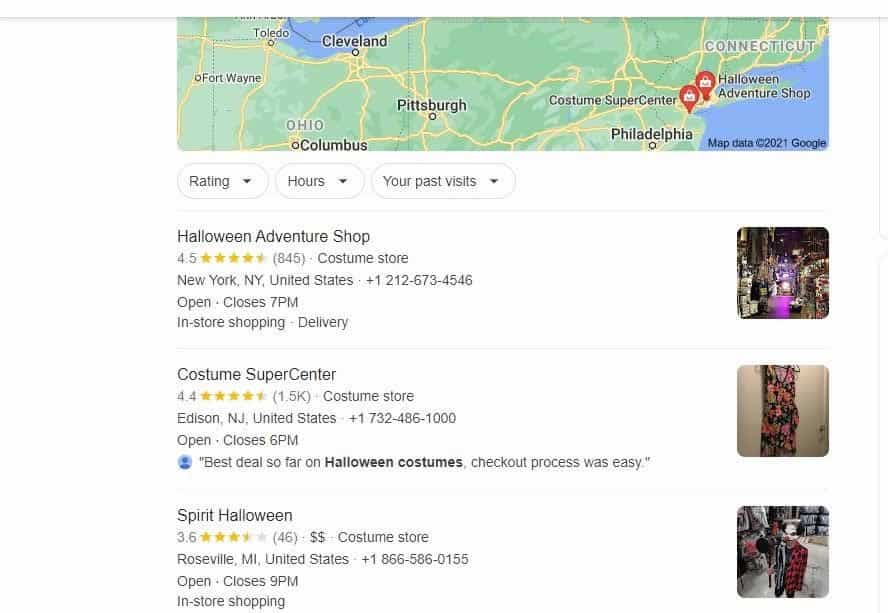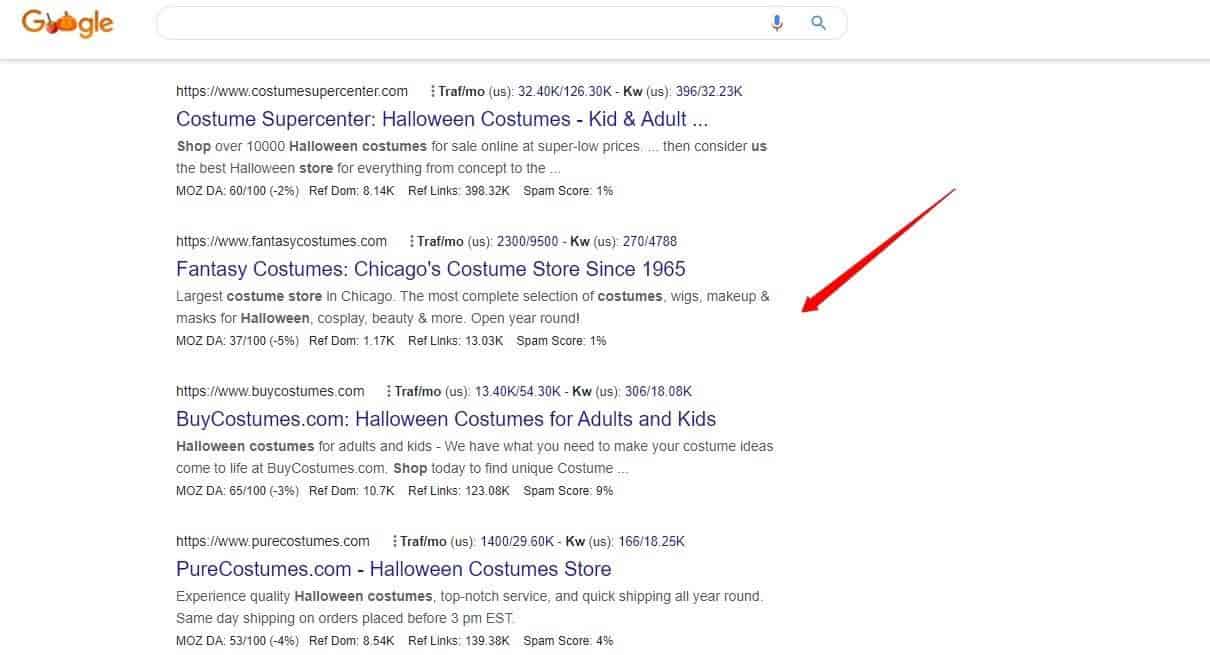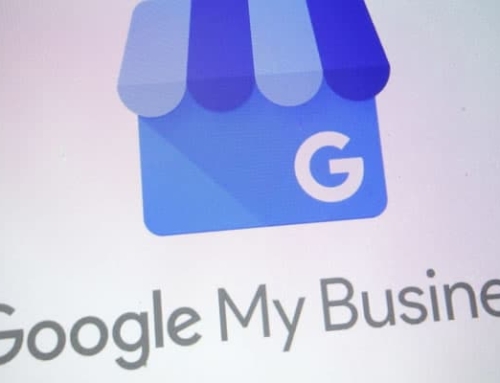What are the Ranking Factors in Local SEO?
You want to rank well in local search, but you don’t know where to start? You’ve tried doing your research, but it’s not worked for you yet!
We have a simple and easy-to-follow guide that shows you what factors Google uses to determine the best local businesses in your area. Now, this means less time spent on trial and error and more time focusing on growing your business.
Our Local SEO Ranking Factors Guide is an essential resource for anyone looking to optimize their website for local search results. It’s designed with simplicity in mind for beginners to easily understand.
Let’s find out more!
The Top Local Search Ranking Factors for 2021
Google displays two types of search results. That is the local pack and organic search results. You must be wondering, local pack?
The local pack search results have a name, address, and phone number (NAP). It is the top section of the search results that includes a map. Check out the screenshot below to understand the results.

The local pack is also referred to as a map pack or snack pack. Initially, the local pack results used to be 7, but Google has reduced them to 3. However, you can click on ‘more results’ to view additional results.
The local SEO results are from on-page SEO, reviews, citations, and links. Google matches the information on your website with the searcher’s query to display the organic results. Here’s a screenshot of local SEO results.

To increase your website’s chances of ranking on pack results and organic results, you need to create a listing on Google my Business (GMB).
However, there are other factors to consider. Check out the comparison table below from Whitespark’s expert survey. It shows the recent Statistics of Local SEO Ranking Factors based on local pack and local organic.
| Local Pack | Local Organic |
|---|---|
| Google My Business (33%) | On-page (32%) |
| Reviews (16%) | Links (31%) |
| On-page (15%) | Behavioral (10%) |
| Links (15%) | Personalization (7%) |
| Behavioral (8%) | Google My Business (7%) |
| Citations (7%) | Citations (6%) |
| Personalization (6%) | Reviews (6%) |
Recent Statistics of Local SEO Ranking Factors:
The Covid 19 pandemic has led to businesses adopting digital marketing to increase visibility online. With the rise in local search, you need to ensure that you are driving traffic to your website.
Local SEO is important for businesses that have a brick & mortar store. Most clients who carry out a local search end up converting. It means that they are looking for a solution urgently.
For instance, a client could be looking for a food court near their location. Google tries as much as possible to match local search results with the client’s location.
The tables below have the statistics for the various ranking factors:
Google My Business Signal:
| 2013 | 2014 | 2015 | 2017 | 2018 | 2020 | |
|---|---|---|---|---|---|---|
| Local Pack / Local Finder | 23% | 20% | 22% | 19% | 25% | 33% |
| Localized Organic Results | 10% | 10% | 08% | 7% | 9% | 7% |
Reviews:
| 2013 | 2014 | 2015 | 2017 | 2018 | 2020 | |
|---|---|---|---|---|---|---|
| Local Pack / Local Finder | 12% | 12% | 11% | 13% | 15% | 16% |
| Localized Organic Results | 6% | 7% | 6% | 7% | 6% | 6% |
On-page:
| 2013 | 2014 | 2015 | 2017 | 2018 | 2020 | |
|---|---|---|---|---|---|---|
| Local Pack / Local Finder | 18% | 15% | 14% | 14% | 14% | 15% |
| Localized Organic Results | 27% | 27% | 26% | 24% | 26% | 32% |
Links:
| 2013 | 2014 | 2015 | 2017 | 2018 | 2020 | |
|---|---|---|---|---|---|---|
| Local Pack / Local Finder | 12% | 12% | 15% | 17% | 17% | 15% |
| Localized Organic Results | 24% | 25% | 25% | 29% | 28% | 31% |
Behavioral:
| 2013 | 2014 | 2015 | 2017 | 2018 | 2020 | |
|---|---|---|---|---|---|---|
| Local Pack / Local Finder | 5% | 7% | 9% | 10% | 10% | 8% |
| Localized Organic Results | 5% | 7% | 10% | 11% | 12% | 10% |
Citations:
| 2013 | 2014 | 2015 | 2017 | 2018 | 2020 | |
|---|---|---|---|---|---|---|
| Local Pack / Local Finder | 18% | 20% | 17% | 13% | 11% | 7% |
| Localized Organic Results | 11% | 11% | 10% | 10% | 8% | 9% |
Personalization:
| 2013 | 2014 | 2015 | 2017 | 2018 | 2020 | |
|---|---|---|---|---|---|---|
| Local Pack / Local Finder | 7% | 8% | 8% | 10% | 6% | 6% |
| Localized Organic Results | 9% | 9% | 9% | 9% | 7% | 7% |
How Google Determines Local Ranking
As earlier mentioned, Google used to display 7 pack results. However, that’s not the case anymore. There are only 3 results.
As a business owner looking to drive traffic to your physical store, always target the local pack results. Optimize your website with the local pack keywords and create a listing on Google my Business.
The major factors you need to consider when you are optimizing your website for local search are:
1. Relevance
So, how relevant is your business to the search? By relevance, it means that your website matches the searcher’s query. Make sure that you provide the necessary information for Google to list your business on the local results.
For example, if your business has several physical stores, you can create different pages that represent the information. Make sure that you include the name, address, and phone number on the website.
Also, add the necessary information like opening and closing hours to increase your website’s relevance.
2. Distance
The distance or proximity of your business is another ranking factor. Is the distance close enough to the searcher’s specified location?
However, if the searcher does not specify the distance, Google calculates it and displays the results depending on the known location.
It is therefore essential to include your business address on your website. Also, you can mention it on your blogs, social media posts, and on the Google my Business listing.
3. Prominence
How prominent is your business? Is it well known across the internet? Prominence is measured through ratings, reviews, user engagement, social signals, among other factors.
For reviews and ratings, you can ask your clients to leave either or both after service delivery. For an eCommerce site, for example, customers shop from your store based on your prominence.
They will check the reviews and ratings on a product before adding the item to the shopping cart.
Local SEO Ranking Factors
While organic SEO helps businesses rank on Google’s top pages, local SEO improves the visibility of a business in a local search result.
So, what factors should you have in mind when optimizing your website for local search?
1. Google my Business
Google my Business allows you to create a listing for free. What you need is your business name, contact, location, address, map, and hours.
Optimizing your business profile on Google my Business makes you discoverable and easy to engage your customers. Your clients can view your contact information and offers from your business profile on Google.
Creating an account on Google my Business is fast and easy. To get started, follow the simple steps and provide the necessary information as required.
Local Pack Ranking Factor
There are several factors you need to consider when using Google my Business. These are:
- the primary category in Google my Business
- the keywords you use in the Google my Business title
- the proximity of address to the point of search
- physical address on Google my Business from the search point
- additional categories in Google my Business
- removing the spam listing through spam finding
- how complete your listing is on Google my Business
- verified listing on Google my Business
Factors That Do Not Impact Ranking Google My Business
There are so many changes with Google my Business. Creating a listing with accurate information increases your chances of ranking on a local search.
However, the factors below do not impact your ranking:
- Enabling appointment URL
- Keywords on the service on Google my Business
- frequency of posts on Google
- the quantity of Google posts
Besides ranking, there is a lot more you can benefit from Google my Business. You get to create a listing for free, engage with your clients, and view how clients interact with your website.
Providing accurate, consistent NAP information can improve your visibility and drive traffic to your website. Google my Business makes it easy for customers to discover your products and services on Google.
Other factors that improve your local ranking are:
2. Reviews
Reviews are part of the local ranking factors on Google. They appear on the local pack.
Customers check online reviews before making a decision. One of the reasons you should encourage your clients to leave reviews is to optimize your Google my Business listing.
Second, it builds trust and credibility for new clients who have not interacted with your products before. According to statistics, only 48% of customers are willing to buy from businesses with less than 4 stars.
Now, what does this imply about reviews? They play a vital role in any business. So, how do you attract customers to leave a review?
First, you can ask them politely or send an email or message requesting the customers to give a review.
Besides, you can ask a question like, ‘how would you rate this product or service? That way, it compels new customers and other prospecting clients to commit to your brand.
In case of any negative reviews, make sure that you respond professionally. Positive reviews imply to Google that customers like what you offer. Hence, it increases your local ranking on the search engine.
3. On-page
Search engine optimization increases the visibility and ranking of a page on Google and other search engines. On-page is a type of SEO that impacts your website directly.
To optimize your website for on-page SEO, you need to use local keywords. One of the tips with keywords is to carry out keyword research.
Keywords improve your relevance and visibility on search engines. For example, include the name of your location on your listing.
If a user searches for a product or service within your location, your website can display on the search results. Well, keywords are not the only ranking factors.
Other on-page factors are links, meta tags, content, mobile responsiveness, and a fast-loading website.
4. Links
Links are part of SEO. A trip and trick when using links is to only add relevant and high-quality links to your website.
Do not be tempted to use a random link on your website to improve your ranking on search engines. Links help Google and users to find content on your website.
Creating high-quality content attracts backlinks from other websites. If other sites link back to you, it alerts Google that your content is relevant.
To earn backlinks, you can publish content on someone else’s website through guest posting, then link back to your content. For instance, you can write a blog on a popular publication, then add links from your website.
When the readers click on the links, they land on your websites. Another way of earning links is by emailing influencers and popular publications within your niche to link back to you. The more backlinks you get, it builds your authority within your industry.
5. Behavioral
How do the users interact with your website? Now, this is where behavioral comes in. It is the user experience your audience has on your website.
Google checks how your audience interacts with your website to determine if it’s relevant or not. The behavioral signals are click-through rates(CTR), check-in, and mobile click to call.
CTR is the number of clicks to your website. The mobile click to call is the phone icon on the website that clients can click to make a call. Finally, the check-in behavioral signal is about how customers land on your website from other platforms like social media.
Google checks the behavior of your website users to determine rank and relevance. Ensure that you increase the user’s experience on your website to trigger their behavior to improve your local SEO.
6. Citations
A citation is a mention, which could earn you a backlink. It legitimizes your website. Most customers will buy a product or request a service from a business with more online citations.
A tip to increasing citations is by including your business name, address, and phone number (NAP) on your listing. Ensure the consistency of your NAP on your website and GMB.
It builds trust and credibility for your customers. It also works in a similar way for Google and other search engines.
7. Personalization
Well, there’s not much you can do to improve personalization. However, if your business is in multiple locations, you can optimize your website based on the area.
For example, you can offer content in various languages and optimize for keywords around the region. If an internet user searches for a product within a specific location, Google optimizes search results based on the search.
As the business or website owner, there is nothing much you can do to use personalization for local SEO.
These Do Not Impact Ranking!
The list above has the factors that improve local ranking on search engines. However, the following do not impact ranking:
- The keywords you use on a description on Google my Business
- The keywords on Google my Business service
- Enabling the messaging feature on Google my Business
- The keywords on the products on Google my Business
- participating in Adwords and other paid products on Google
Local ranking is not always about keywords. SEO is about users and search engines. Optimize your business website for distance, relevance, and prominence.
Conclusion
If you’ve not created a business listing for your website on Google my Business, you need to have done it by now. From this guide, you can already tell the role of Google my Business in local SEO.
Businesses are using online platforms to market, increase visibility and attract more customers. Your competitor is also online, working hard to drive traffic to their website and win your customers.
Now, over to you. Make sure that you implement the factors above to improve your ranking in a local search.











